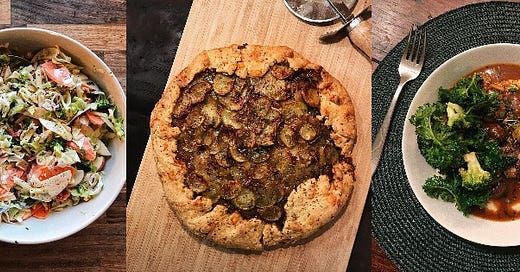Waldorf-ish Salad, Caramelised Leek Tart & A Mushroom Stew
plus, tips and thoughts for the season ✨
Allô! 👋
Happy New Year! I hope you were able to enjoy some relaxing days between the end of December and the start of January. On my end, I had a very pleasant holiday. We spent a fair amount of time outside, did lots of sledding and hiking, enjoyed a lot of music, and I got to read a few new cookbooks (including this brick of a beauty about Nordic coo…
Keep reading with a 7-day free trial
Subscribe to good food at home to keep reading this post and get 7 days of free access to the full post archives.




